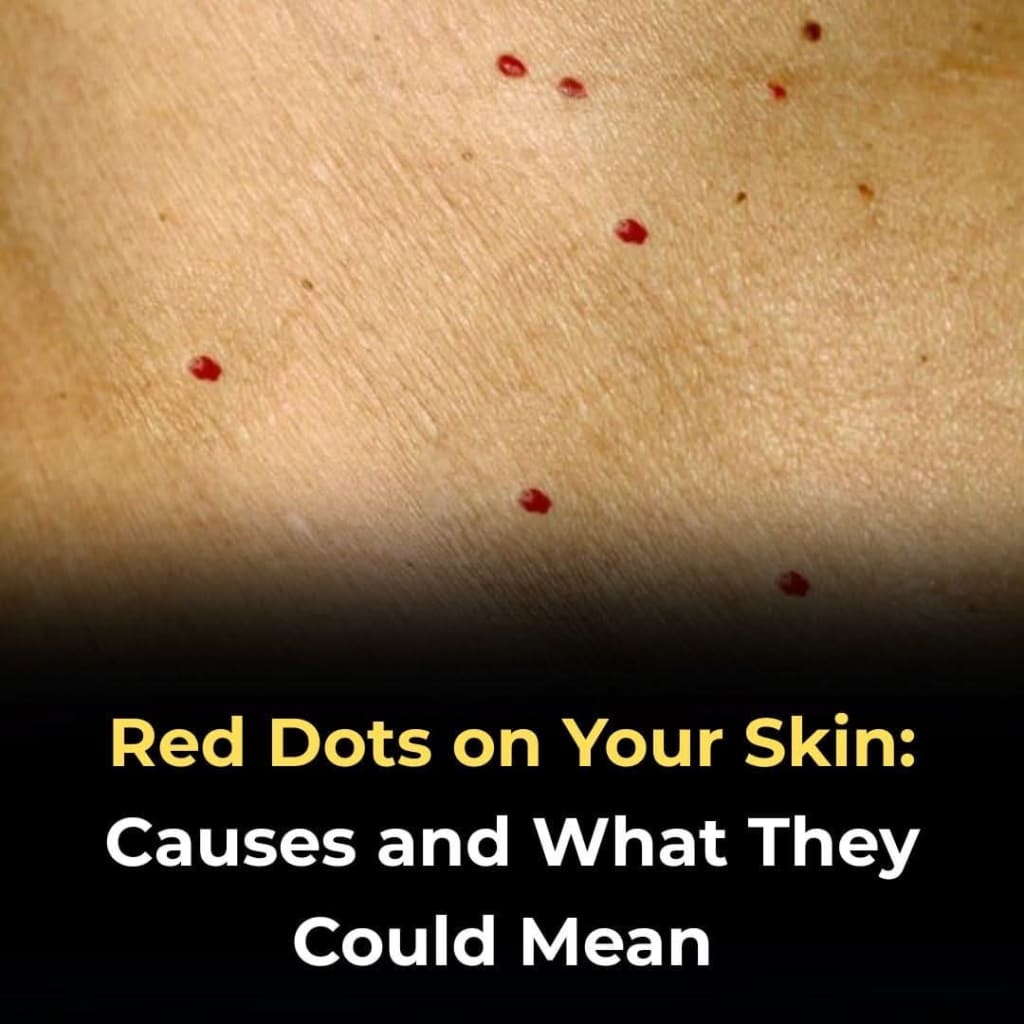Those tiny red dots on your skin may seem harmless—but they could be signs of aging, allergies, or even underlying health conditions. Here’s what you need to know

If you’ve ever looked down at your skin and noticed tiny red dots scattered across your arms, chest, or legs, you’re not alone. These little spots can appear suddenly and often seem harmless, but it’s important to understand what they could mean. While many red dots on the skin are completely benign, some can indicate underlying health issues that may require medical attention.
One of the most common causes of red dots on the skin is something called cherry angiomas. These are small, bright red bumps made up of blood vessels and are most commonly seen in people over the age of 30. They’re generally harmless and don’t require treatment unless they change in size, shape, or start to bleed. Many people develop them with age, and they are considered a natural part of getting older.
Another possible cause is petechiae, which are tiny red or purple spots that form when small blood vessels under the skin burst. Unlike cherry angiomas, petechiae are flat and don’t fade when pressed. They can be caused by things as simple as intense coughing or vomiting, but they can also be linked to more serious issues like infections, blood clotting disorders, or low platelet levels. If you notice a sudden spread of these spots, especially along with symptoms like fever or fatigue, it’s wise to see a doctor.
Heat rash, also known as miliaria, is another common reason for red dots. This usually happens when sweat glands become blocked in hot and humid weather, leading to tiny, itchy red bumps. Though not dangerous, heat rash can be uncomfortable. Staying cool and dry can help it clear up quickly.
Allergic reactions are another frequent cause of red spots on the skin. These reactions can occur due to food, medications, insect bites, or even certain skincare products. When red dots appear in clusters and are accompanied by itching or swelling, it’s often an allergic response. In severe cases, where symptoms include difficulty breathing or swelling of the lips and face, emergency medical care is needed.
Sometimes skin conditions like eczema, psoriasis, or rosacea can also lead to red patches or dots. Eczema typically comes with dry, itchy skin, while psoriasis can appear as red, scaly patches. Rosacea usually causes redness and red spots on the face and may be mistaken for acne.
Insect bites may also leave behind red dots. Mosquitoes, fleas, bedbugs, and mites can cause bites that look like tiny red bumps or welts, often in clusters or lines. These are usually itchy and can be mistaken for other skin issues. Checking your bedding, clothes, and surroundings for pests can help identify the cause.
In more serious cases, red dots can be a warning sign of internal medical conditions. For example, liver disease can cause spider angiomas, which look like red spots with thin extensions radiating out like a spider’s web. Blood cancers like leukemia, or infections like meningitis, may also cause petechiae. These conditions are rare but serious and should be considered if red dots are accompanied by symptoms like fatigue, easy bruising, or persistent fever.
It’s not always easy to tell whether red dots on your skin are something to worry about. That’s why it’s important to pay attention to any changes. If the dots appear suddenly, multiply quickly, start to bleed, or are accompanied by other symptoms, it’s a good idea to consult a healthcare provider. Most of the time, red dots are harmless, but staying informed and observant can help catch problems early if they do arise.
Your skin often acts as a mirror for what’s happening inside your body. So while a red dot here or there usually isn’t a cause for alarm, keeping track of any new or unusual skin changes is a smart habit. When in doubt, don’t hesitate to seek medical advice—better safe than sorry.



